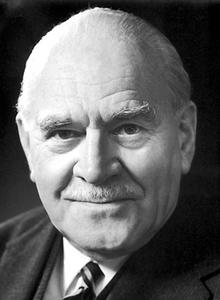Ronald George Wreyford Norrish
| Ronald George Wreyford Norrish | |
|---|---|
 |
|
| Born |
9 November 1897 Cambridge, United Kingdom |
| Died | 7 June 1978 (aged 80) Cambridge, United Kingdom |
| Nationality | United Kingdom |
| Fields | Chemistry |
| Institutions | University of Cambridge |
| Alma mater | University of Cambridge (BA, PhD) |
| Thesis | Radiation and chemical reactivity (1924) |
| Doctoral advisor | Eric Rideal |
| Known for | Norrish reaction |
| Notable awards |
|
Ronald George Wreyford Norrish FRS (9 November 1897 – 7 June 1978) was a British chemist who was awarded the Nobel Prize in Chemistry in 1967.
Norrish was born in Cambridge and was educated at The Perse School and Emmanuel College, Cambridge. He was a former student of Eric Rideal.
Norrish was a prisoner in World War I and later commented, with sadness, that many of his contemporaries and potential competitors at Cambridge had not survived the War. Military records show that 2nd Lieutenant Norrish of the Royal Artillery went missing (captured) in 21.3.18. Norrish rejoined Emmanuel College as a Research Fellow in 1925 and later became the Head of the Physical Chemistry Department at the University of Cambridge, occupying the left part of the Lensfield Road building with the other (and separate) department of 'Chemistry' (which encompassed organic, theoretical and inorganic chemistry) led by (Lord) Alexander R. Todd being accessed by going right at the main entrance. Both departments had separate administrative, technical and academic personnel until they merged to form one chemistry department under John Meurig Thomas in the early 1980s. Norrish researched photochemistry using continuous light sources (including after the war, searchlights).
Norrish was elected a Fellow of the Royal Society (FRS) in 1936. As a result of the development of flash photolysis, Norrish was awarded the Nobel Prize in Chemistry in 1967 along with Manfred Eigen and George Porter for their study of extremely fast chemical reactions. One of his accomplishments is the development of the Norrish reaction.
...
Wikipedia
